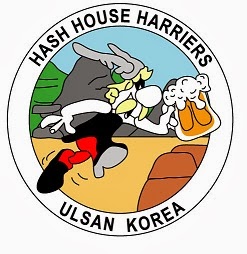Bibimbap – The Food of Kings
In Korea, as well as Japan and China, the words for ‘rice’ and ‘food’ are often interchangeable. After the Korean War, when food was scarce “Have you eaten?” (밥 먹었어요?) was a common greeting. In this instance the word for rice (밥) means ‘food’ or ‘a meal’ and so highlights the importance of rice as THE staple food of the region. Archeologists have found rice grains dating back at least 3000 years, predating the theory that rice originated in China. Countless countries have made rice their staple food and thousands; if not hundreds of thousands of recipes exist for this versatile grain.
Bibimbap (literally meaning mixed rice) is the signature dish of Jeonju and one of the most famous dishes in Korean cuisine. Sometimes referred to as Goldong ban (King’s bibimbap), bibimbap was considered the greatest among the three great dishes of the Joseon dynasty and widely known as a food representative of Joseon.
The name bibimbap (and especially its translation) may fool you into thinking that any dish of mixed rice and vegetables can be called bibimbap. It can’t. Whilst bibimbap does not have anappellation d’origine contrôlée (AOC) like Champagne or a PDO(protected designation of origin) like Parmesan cheese, there is a process to follow for authentic Jeonju Bibimbap. The rice should be cooked in a sagol soup, a stock made from continually boiling beef leg bones, and it is said that without an artisan’s spirit the delicate balancing of the ingredients is not possible. When combined with the labourious process of preparing and cooking the individual elements of bibimbap you can begin to understand why Jeonju bibimbap (as it is known outside the city) is a specialty of the city and a food revered all over Korea.
The ingredients in Jeonju bibimbap are seasonal and can number thirty or more, but most commonly you can find cucumber, courgette/zucchini, mushrooms, doraji (bell flower root) kim (seaweed) and beef, minced or sliced. Other ingredients often include bean sprouts, dubu (tofu), gosari (fern stems) and lettuce. Pine nuts, jujube (Chinese or red dates) and sesame seeds are also commonly added
The individually cooked ingredients (namul) are then arranged on top of the rice by the concept of yin and yang and topped with a raw egg yolk, leaving you with an incredibly balanced meal, both nutritiously and philosophically.
As you can imagine there are many places to eat bibimbap in Jeonju but some restaurants are more traditional and well known than others. Gogung(고궁) is one of the more traditional restaurants and serves Goldong ban as part of a banquet as well as individual portions of Jeonju bibimbap. The restaurant chain, Myung sung ok (명성옥), serves a particularly delicious dolsot (hot stone pot) bibimbap (6000 원) and Gajokhoiwon (가족회원) is also very well known throughout the city for its bibimbap (10000 원).
Jeonju, the spiritual home of the Joseon dynasty is located on the Honam plain, a fertile region known for rice production. Home to over 600,000 people and surrounded by the seven peaks of the Noryeong ranges, Jeonju has a long history and is regarded as a centre of Korean culture and the arts.
In Korea, as well as Japan and China, the words for ‘rice’ and ‘food’ are often interchangeable. After the Korean War, when food was scarce “Have you eaten?” (밥 먹었어요?) was a common greeting. In this instance the word for rice (밥) means ‘food’ or ‘a meal’ and so highlights the importance of rice as THE staple food of the region. Archeologists have found rice grains dating back at least 3000 years, predating the theory that rice originated in China. Countless countries have made rice their staple food and thousands; if not hundreds of thousands of recipes exist for this versatile grain.
Bibimbap (literally meaning mixed rice) is the signature dish of Jeonju and one of the most famous dishes in Korean cuisine. Sometimes referred to as Goldong ban (King’s bibimbap), bibimbap was considered the greatest among the three great dishes of the Joseon dynasty and widely known as a food representative of Joseon.
The name bibimbap (and especially its translation) may fool you into thinking that any dish of mixed rice and vegetables can be called bibimbap. It can’t. Whilst bibimbap does not have anappellation d’origine contrôlée (AOC) like Champagne or a PDO(protected designation of origin) like Parmesan cheese, there is a process to follow for authentic Jeonju Bibimbap. The rice should be cooked in a sagol soup, a stock made from continually boiling beef leg bones, and it is said that without an artisan’s spirit the delicate balancing of the ingredients is not possible. When combined with the labourious process of preparing and cooking the individual elements of bibimbap you can begin to understand why Jeonju bibimbap (as it is known outside the city) is a specialty of the city and a food revered all over Korea.
The ingredients in Jeonju bibimbap are seasonal and can number thirty or more, but most commonly you can find cucumber, courgette/zucchini, mushrooms, doraji (bell flower root) kim (seaweed) and beef, minced or sliced. Other ingredients often include bean sprouts, dubu (tofu), gosari (fern stems) and lettuce. Pine nuts, jujube (Chinese or red dates) and sesame seeds are also commonly added
The individually cooked ingredients (namul) are then arranged on top of the rice by the concept of yin and yang and topped with a raw egg yolk, leaving you with an incredibly balanced meal, both nutritiously and philosophically.
As you can imagine there are many places to eat bibimbap in Jeonju but some restaurants are more traditional and well known than others. Gogung(고궁) is one of the more traditional restaurants and serves Goldong ban as part of a banquet as well as individual portions of Jeonju bibimbap. The restaurant chain, Myung sung ok (명성옥), serves a particularly delicious dolsot (hot stone pot) bibimbap (6000 원) and Gajokhoiwon (가족회원) is also very well known throughout the city for its bibimbap (10000 원).






